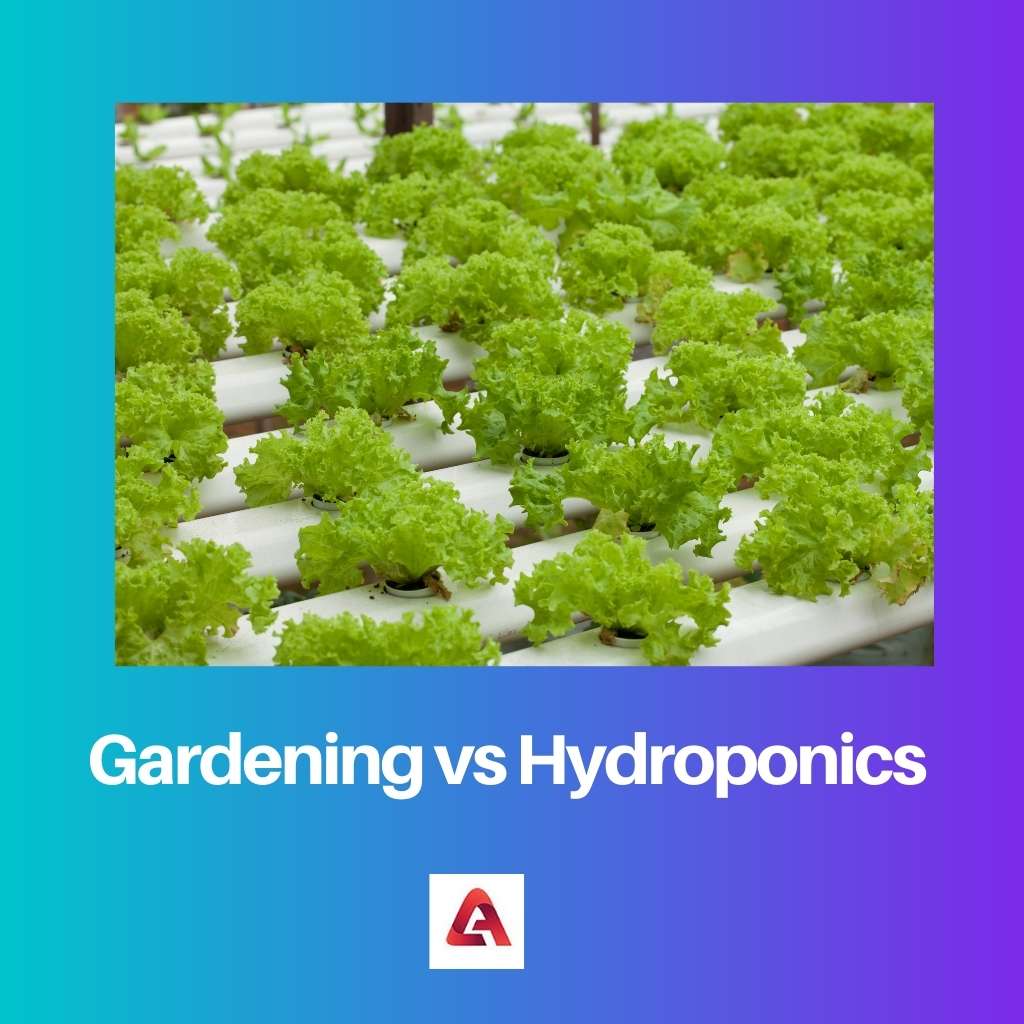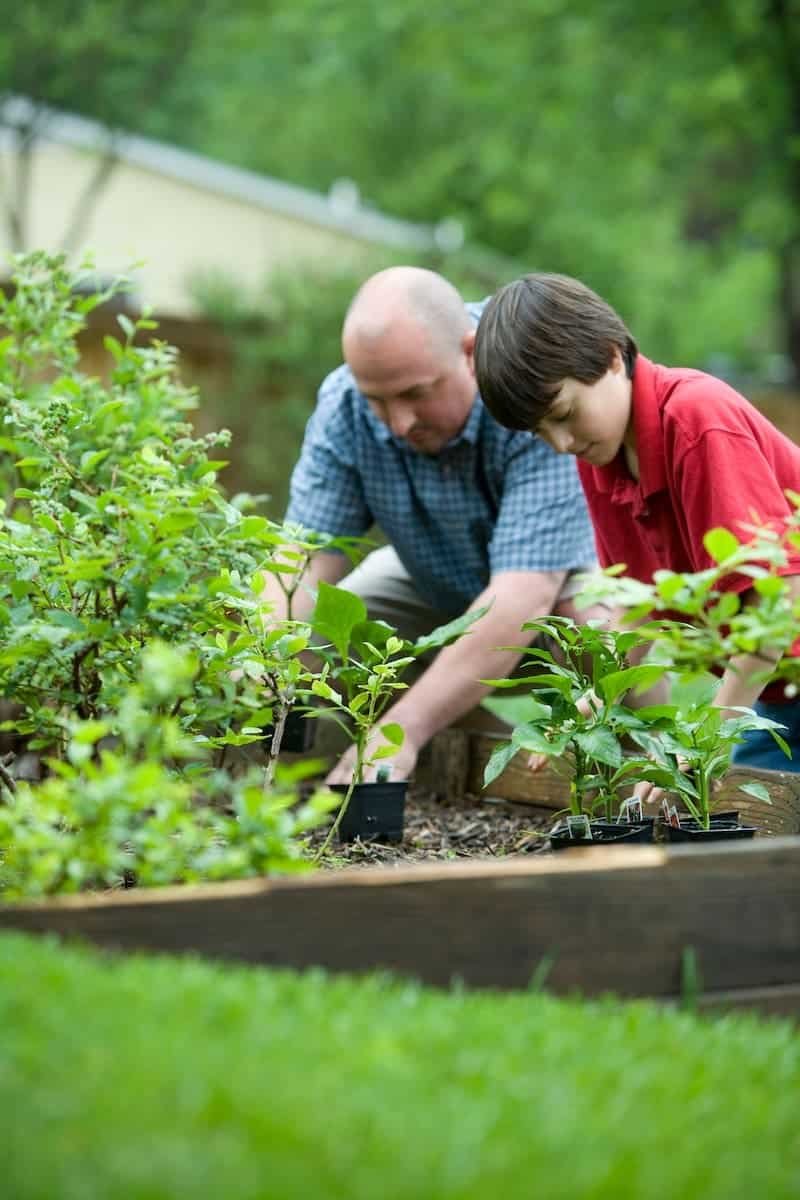Growing plants, crops or any planting has been considered to be done on the soil. But the trend has changed.
After observing various soil problems and difficulties while cultivating, scientific revolutions filled the voids. Now, gardening or any cultivation has no fear of bad weather, water problems, etc.
The traditional methods were replaced with modern forms of agriculture, with an unbelievable approach to science.
Key Takeaways
- Gardening involves cultivating plants in soil, while hydroponics grows plants in nutrient-rich water or other soilless mediums.
- Hydroponic systems require less space and water than traditional gardening, making them more sustainable and efficient.
- Hydroponics can yield faster plant growth and higher crop production than conventional gardening due to the optimized nutrient delivery and controlled environment.
Gardening vs Hydroponics
Gardening is cultivating a garden and growing crops. In gardening, the plant roots must seek out nutrients in the soil. Hydroponic is a type of horticulture that grows plants without using soil. Instead, it uses water with dissolved nutrients surrounding the roots to give plants easier access to the nutrients.

Gardening turns out to be an excellent type of horticulture wherein one can cultivate commercial crops and ornamental plants. Before gardening, make sure to prepare the soil by proper tilling.
Besides these, proper watering without leading to overwatering also matters. Moreover, one should place the garden in a location that offers a minimum of 6-8 hours of sunlight to all plants.
Hydroponics, derived from the Greek words “hydro” combined with “ponos,” refers to the practice in which plants are grown in water enriched healthy environments rather than soil. The history of this practice was observed for the first time in the floating gardens of Mexico and the Hanging Gardens of Babylon.
The roots are supported by some typical materials in the system and are also kept in a nutrient-rich environment.
Comparison Table
| Parameters of Comparison | Gardening | Hydroponics |
|---|---|---|
| Meaning | In the simplest terms, gardening refers to the practice of growing plants, vegetables, and crops. | In the simplest terms, hydroponics refers to the cultivation method of plants not in the soil but in the presence of water. |
| Appearance | A normal garden looks vibrant, green, and lush. | A hydroponic garden imparts a commercial and utilitarian look. |
| Influence of external factors | Plants grown through gardening depend on external factors and sources for their nutrition. Thus, changes in environmental conditions can affect plant health. | In a hydroponic system, the plant’s requirements are provided in the system. One has absolute conditions over the growing conditions, which ensures consistent and better plant health. |
| Space requirements | Plants grown in gardening are grown in soils. Thus, they have larger and broader root systems that demand a lot of space. | Plants grown in hydroponic systems easily get all their requirements and thus have a narrower root system that demands less space. |
| Water requirements | Gardening uses more water in comparison to hydroponics. Moreover, situations such as under watering and over watering may also arise. | The water requirements for hydroponics are 10 times less than that of gardening. This is because the plant gets sufficient requirements from the reservoir, which is also not exposed to the sun. |
What is Gardening?
Gardening, a subset of horticulture, is the practice of the culture and cultivation of plants. Gardening means far beyond the planting of ornamental plants and flowers.
Besides these ornamental plants, gardening is also used to cultivate useful plants, vegetables, and crops. Although residential gardening has become common for every household, there are other various types of gardening.
Other types of gardening include indoor gardening, native plant gardening, water gardening, container gardening, hügelkultur, community gardening, garden sharing, organic gardening, biodynamic gardening, and commercial gardening. Gardening is beneficial from an environmental aspect and is also beneficial for humans.
Sometimes, it’s also considered as an exercise.
When one performs in the early hours of the day, gardening exposes the human body to sunlight, which benefits bones and teeth.
Besides these, gardening also reduces the chances of dementia and other such diseases. On the environmental aspect, although humans make gardens, they set up a natural environment, thereby stabilizing the soil and filtering the water present in the environment.
Community gardens are among the best and most beneficial ways of spreading greenery, community strength, unity, and wellness. Moreover, it becomes essential to research well before starting with a garden.

What is Hydroponics?
Hydroponics is the method and practice of growing crops and plants in an aqueous solvent consisting of solutions of mineral nutrients. It’s another kind of horticulture wherein the cultivation and culture of plants occur in the absence of soil.
Moreover, it is also referred to as a “subset” of hydroculture. Here, the roots of the plants are held upright in an inert medium and kept immersed in a nutritious liquid.
The plants and crops cultivated in this process include cucumbers, cannabis, tomatoes, strawberries, lettuce, peppers.
Hydroponics is a commercial method of producing a mass amount of crops; The nutrients of the process are taken from various sources such as duck manure, chemical fertilizers, fish excrement, etc.
The core elements of a proper hydroponic system include; freshwater, oxygen, support for roots, nutrients, and light. Freshwater with an acidity of around 6-6.5 is best for creating a hydroponic system.
For getting this acidic range, one can get water mixed with any over-the-counter solution from the hydroponic store.
For letting oxygen travel in and out through the hydroponic system, one can leave some vacant space between the reservoir base and the plant base. If such arrangements are not possible, one can oxygenate the system with an air pump.
For providing support to the root, one can use materials such as Rockwool, perlite, coconut fiber, vermiculite, etc. One should highly avoid materials such as sand and gravel.
Make sure to keep the system in such a place where it gets enough light. Moreover, don’t forget to provide sufficient plant food to the system.

Main Differences Between Gardening and Hydroponics
- Gardening involves cultivation in soil. The presence of soil leads to weeds which eat away beneficial nutrients from the plants. On the other hand, hydroponics doesn’t involve soil and thus has no weeding problems.
- The involvement of soil increases the chances of insects and predators spoiling the plant’s health in gardening. But, in hydroponics, there are significantly fewer or lower risks of infections and infestations.
- Crops are grown with gardening that takes much time to grow and yield. But, crops grown with hydroponics quickly grow, which lets one enjoy more harvests in a single growing season.
- Gardening is one of the cheapest horticulture methods as it has low initial investment and maintenance charges. But, hydroponics turns out to be quite expensive as there are heavy costs involved in the initial setup and maintenance of nutrient medium and light supply.
- In gardening, the yield of plants takes time because the plant needs to collect all its nutrient requirements by itself. But, in hydroponics, the yield of plants doesn’t take much time because the plant is provided with all the nutrients required in the appropriate amount.

- https://www.emerald.com/insight/content/doi/10.1108/NFS-10-2015-0118/full/html
- https://www.tandfonline.com/doi/abs/10.1080/01904168209363035
